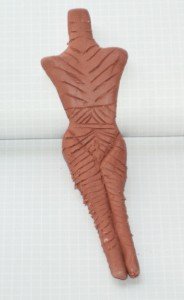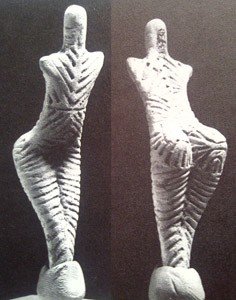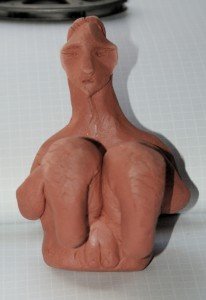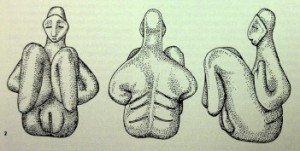
My master’s thesis is a study of anthropomorphic figurines from the Neolithic of Southeastern Europe and Southwest Asia. So I thought I’d try my hand at making a couple. Disclaimer: I’ve never worked with clay before today. And I’ve made exactly two anthropomorphic figurines ever.
These two:




The first is a Cucuteni figurine of probably 4500 BCE in Romania. The second is a Sesklo figurine of around 6500 BCE found in Thessaly, Greece.
The originals are both at around 6 cm in height and my attempts are about double that. So, as small as mine are (they fit in the palm of my hand), the originals are much smaller.
What I’ve learned is that making a figurine that is obviously female is tough. Sculpting the genitalia on the Sesklo figurine and getting the hips just right on the Cucuteni was time consuming. A sexless figurine would have been much easier. Hell, a male figurine might have been easy if I simply made a sexless one and resorted to a bit of plastic applique (three bits of clay in the crotch).
One of the things my thesis research has shown is that while there are a significant number of female figurines compared to male, there are nearly as many that are sexless. Of the figurines I included in my study (n=403), 45% were female, 7% were male, and 1% were androgynous or a twin with one of each. The other 47% were of unknown sex.
What does this tell us about gender and identity in prehistoric times? Were figurine makers simply lazy and found it easier to make figurines without regard to sex? If so, then depicting the female gender was important given the number of figurines, but what of the sexless ones? Did they simply serve different functions? Were their genders defined by their non-durable attachments (textile clothing, jewelry, painting, etc.).

Leave a Reply
You must be logged in to post a comment.